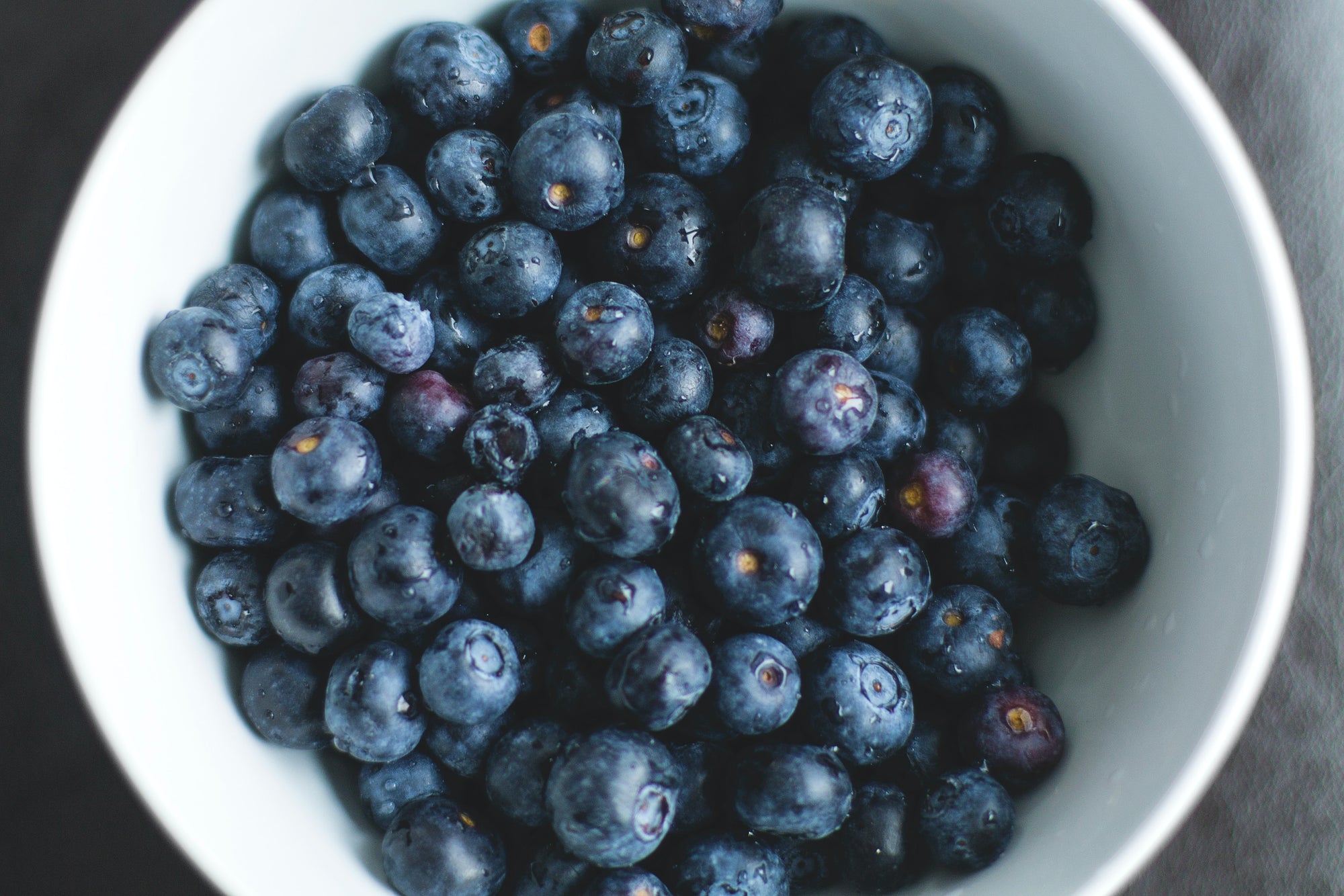
We’re all trying to do better. Choosing healthier foods, making intentional options about our health, and maybe even taking the stairs instead of the elevator. Every time we seem to master one new health trend, another pops up, offering more benefits, making us wonder if we’re doing it right.
The truth is, some of what we consider “trendy” isn’t really trendy at all — it actually works. That’s the case with superfoods. If you’re feeling a little underwhelmed by the continual barrage of information on superfoods and supplements, we’re here to help.
Superfoods are beneficial and an easy way to add nutrition and healthy eating to your day-to-day routine. We’ll explain what’s so super about superfoods and tell you how to easily add them to your day the JOYÀ way.
What Is a Superfood?
Superfoods aren’t a separate category of food like dairy or protein. Rather, they are natural foods that are particularly nutrient-dense, making them beneficial to the body on numerous levels and great additions to a healthy diet.
It’s no secret that our health is on the decline. Heart disease has been the number one killer in America for decades, and our rates of metabolic disease have risen 35% since the late 1980s. Luckily, these healthy foods have ingredients that directly impact heart and metabolic health.
What Makes a Food “Super?”
So how do we know whether the leafy greens on our plate or the plant-based veggie burgers are “super?” While there’s no set standard for what makes a food super or not, there are a few generally accepted rules.

These include:
- The food is naturally occurring. You won’t find many (if any) processed foods listed as superfoods. Minimal processing, like dehydrating certain foods to powder them and including them in superfood powders and supplements, isn’t considered “processing” in this sense.
- Superfoods will contain numerous vitamins, minerals, and plant-based compounds, which can help support metabolic functions like blood pressure, cholesterol, and blood sugar regulation.
- Some superfoods are rich in antioxidants (like polyphenols and flavonoids), which help protect the body from oxidative stress, a key component of metabolic illness.
- Some superfoods will contain additional benefits, like probiotics, prebiotics (fiber), and healthy fats (like omega-3 fatty acids).
These ingredients help support the areas of our health that are rapidly declining as a whole. Adding as many of them as possible to your daily diet is a good idea, especially for those who are attempting to circumvent age-related health issues and enjoy a healthier lifestyle.
What’s the Difference Between Superfoods and Functional Foods?
Nope, they’re not the same! Superfoods support the body with vitamins, minerals, nutrients, and compounds essential for our bodies to thrive. Meanwhile, functional foods offer benefits beyond the nutrients they offer, supporting bodily functions like immunity, cognitive function, and digestion.
Many functional foods are also considered superfoods, but the reverse isn’t always true. For instance, quinoa is sometimes considered a superfood, but it isn’t considered a functional food.
What Are the Health Benefits of Superfoods?
Superfoods offer superior nutritional value when compared to their non-superfood counterparts. They offer us a vital health hack, allowing us to take in the compounds we need without racking up excess calories, added sugar, or unhealthy fats.
By eating a diet that contains more superfoods, we can support our heart health, maintain a healthy weight (and even encourage weight loss), support the immune system, and reduce our risk of experiencing chronic diseases.
It’s important to note that simply eating these foods won’t keep your heart healthy, prevent you from dealing with obesity, or even prevent you from catching a cold. However, along with exercise, proper stress management, and adequate sleep, they can be a key to your whole health puzzle.
11 Examples of Superfoods and Their Benefits
Ready to see which foods to add to your next grocery shopping list? We’ll cover 12 superfoods we love, explaining why we love them and the benefits they provide. We’ll also give you a few suggestions on how to add them to your plate each day.
1. Blueberries
Blueberries (as well as raspberries, cranberries, tart cherries, acai berries, and goji berries) all contain a particular plant-based flavonoid named anthocyanin. This flavonoid has been directly linked with supporting heart health in women.
In addition to flavonoids, you’ll get fiber, vitamin C, vitamin K, and manganese, which are all essential vitamins and minerals the body needs on a daily basis to function properly. Toss them in your smoothies, protein shakes, in your morning pancakes, or on your lunchtime salad. Or, try eating them by themselves. They make a delicious and filling snack on their own.

2. Spirulina
If you’re a little spirulina-shy, that’s okay. After all, it’s a type of algae, it’s greenish-blue, and the flavor is best when it’s masked by other ingredients. The reason spirulina sits on our superfoods list is because it’s one of the most incredibly dense foods in terms of nutrients.
A single tablespoon of spirulina powder contains four grams of protein, as well as nearly half of your RDI of copper, which is important for the creation of new tissue and blood vessel health. It also contains several B vitamins, iron, magnesium, and potassium, as well as some omega-3 fatty acids.
These nutrients alone aren’t what spirulina is famous for, however. Spirulina is a powerful antioxidant due to its high content of phycocyanin, a plant-based compound that helps guard the body and cells against free radicals.
Spirulina is best enjoyed in a prepared powder that can be added to shakes and smoothies.

3. Moringa
The first crossover in our list, moringa leaf, is both a superfood and a functional food. Moringa has antioxidant properties and is nutrient dense. It’s a good source of over 90 nutritional compounds, including calcium, zinc, vitamin C, vitamin E, and several B vitamins. It’s also a high source of carotenoids.
Moringa is considered a functional food because it supports cognitive function. Numerous studies (which you can find linked here) have found that extract from moringa leaves helps protect and support memory, focus, and learning.

4. Chia Seeds
Small but mighty, tiny chia seeds are packed with protein, fiber, and antioxidants. You’ll also load up on important minerals like phosphorus and magnesium, which are needed for cellular repair and energy metabolism.
Try adding chia seeds to your salad, sprinkling them into your smoothie, or spooning them into overnight oats.

5. Acai Berries
Just like blueberries, acai berries contain phytochemicals that can help protect the body against oxidative stress.
You can add acai berries to smoothies and salads or go for the classic acai bowl. If you decide on the bowl, just be sure it doesn’t contain a lot of added sugar.

6. Turmeric
Turmeric is another crossover food that is both a superfood and functional food. Its nutrient profile includes potassium, iron, and manganese, but the real benefits of turmeric lie in its active ingredient, curcumin.
Curcuminoids possess soothing properties that can help alleviate inflammation, as well as joint aches. It’s also used to help promote digestion and offer relief from gas and bloating.

7. Sweet Potatoes
If it’s complex carbohydrates you want, sweet potatoes are what you’re looking for. These gifts from the ground contain vitamins A, C, and B, as well as fiber, potassium, and manganese. One sweet potato is roughly 105 calories and can even satisfy a sweet tooth when roasted to bring the sweet flavors forward.
You can top sweet potatoes with black beans and salsa to change them from a single food to an entire meal or keep a few cooked sweet potatoes on hand to add as sides to your lunches and dinners.

8. Goji Berries
Goji berries are a great source of antioxidants, especially zeaxanthin. This antioxidant is particularly useful for the eyes, helping support and protect your vision.
Try adding dried goji berries to some homemade trail mix. You can also find goji berries in juices and teas.

9. Cacao
No, it’s not the same as cocoa. Both cocoa and cacao undergo some processing if they will eventually be used in powder form, but cocoa is processed at much higher temperatures, which eliminates some of the nutrients.
Cacao, on the other hand, is a source of antioxidants, as well as fiber, magnesium, potassium, and iron. Early studies also suggest that cacao might have functional benefits, helping to support neurological and cognitive function. You can find cacao in all of JOYÀ’s Functional Chocolates.
10. Pine Pollen
Pine pollen is another superfood and functional food superstar. Pine pollen is both nutrient-rich and antioxidant-loaded. This pollen is one of the only superfoods that contains all nine essential amino acids, making it a complete protein.
Pine pollen has been used in Traditional Chinese Medicine (TCM) for millennia and is thought to help balance the Qi, the body’s vital energy. It’s used as an energizing tonic for the entire body. 
11. Matcha
You better believe there’s much to say about matcha. This powerful green tea powder consists of leaves that are protected from the sun’s nutrient-leaching effects during growth. As such, it contains more vitamins, nutrients, and polyphenols than regular green tea.
Matcha powder is a superfood and functional food that helps support mental clarity. Matcha contains caffeine, but it also contains L-theanine, an amino acid that can help promote relaxation and rest. The combination of these two ingredients produces what many have referred to as “calm focus” — which is a better solution than cup after cup of caffeinated coffee that could leave you with jitters and a crash.
The Bottom Line
Adding superfoods (and functional foods) to your diet can help support total body health and wellness. You can find many of the above-referenced superfoods inside JOYÀ products. Our products are filled with exceptional ingredients that are meticulously sourced and third-party tested. You’ll get the ingredients that you need and nothing you don’t.


